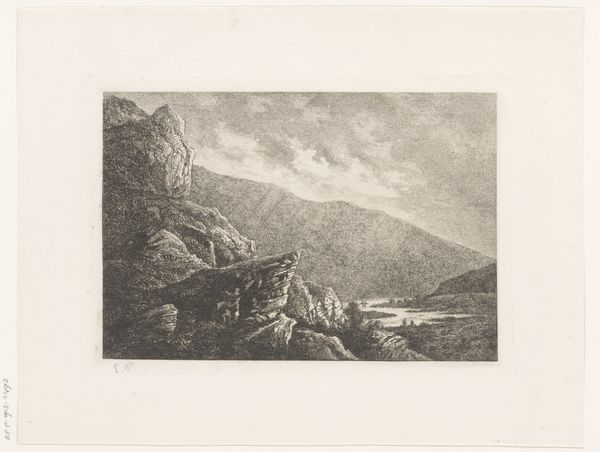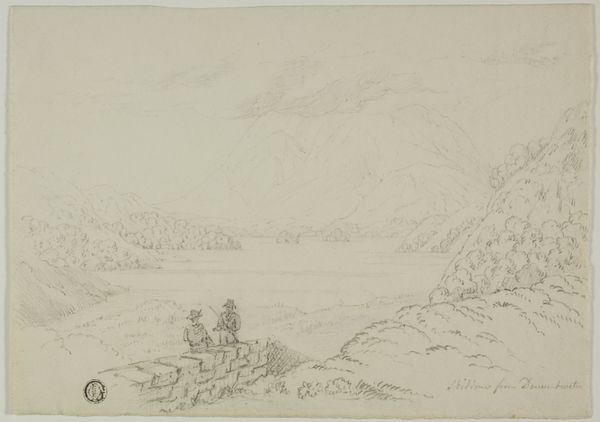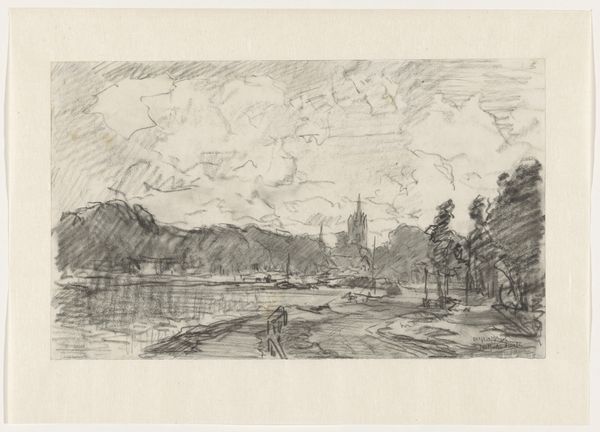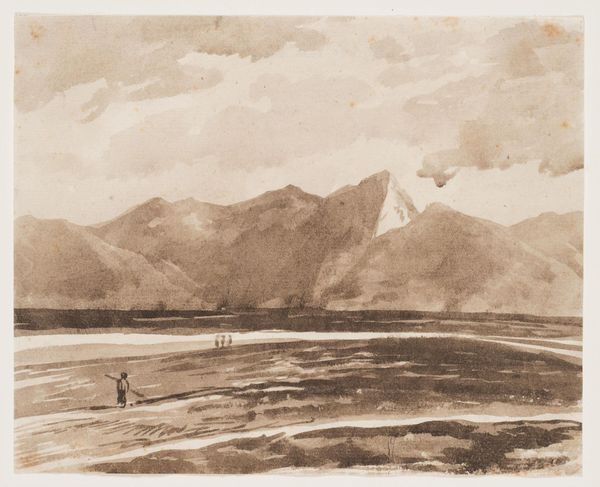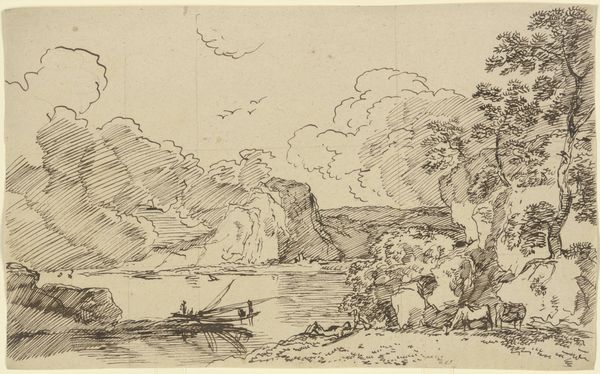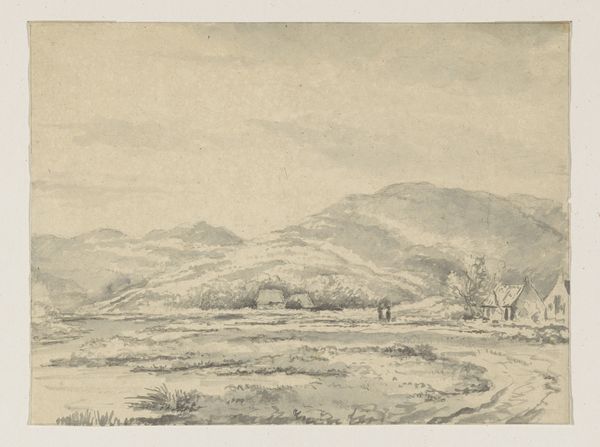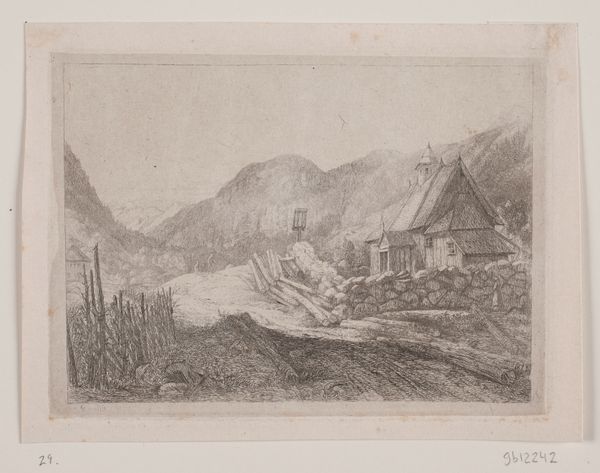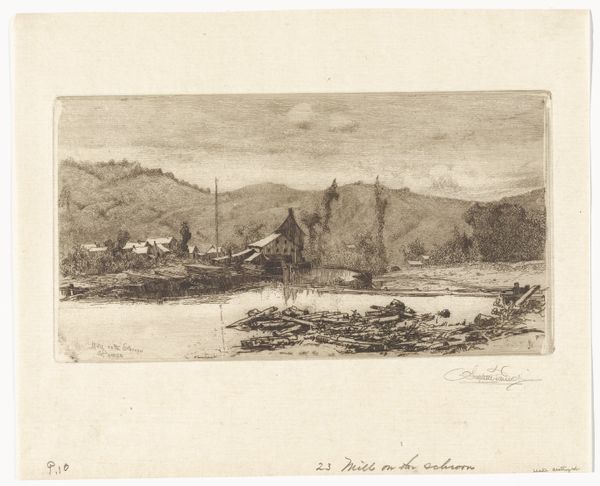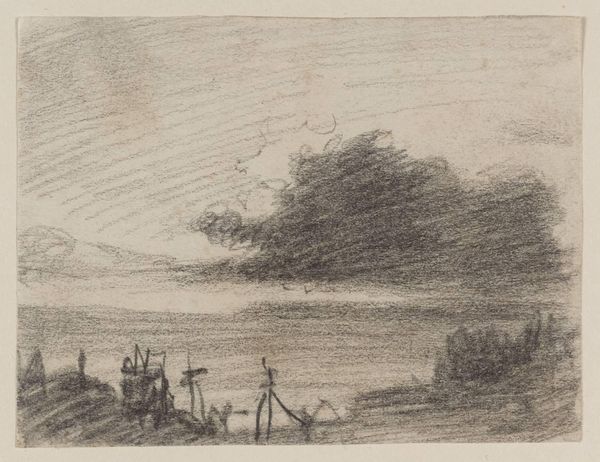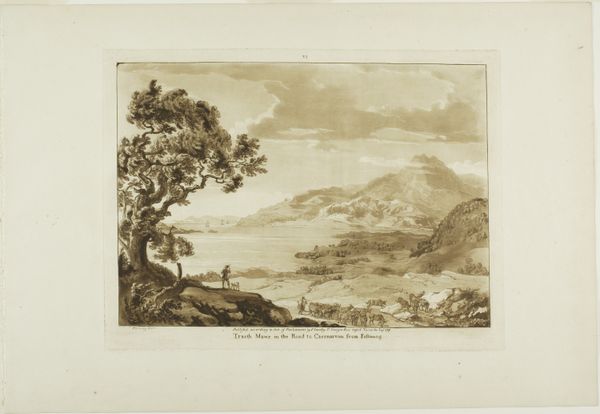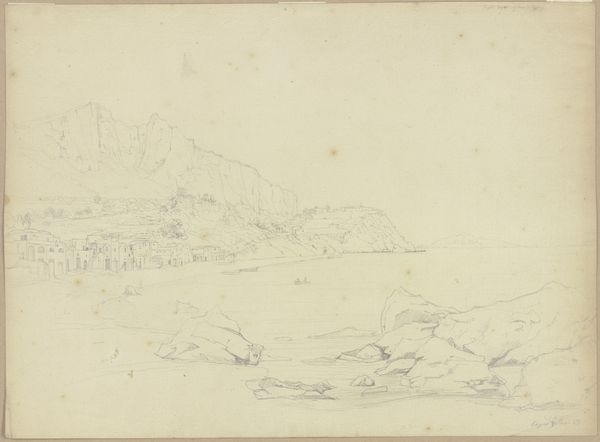
Dimensions: plate: 12 × 20 cm (4 3/4 × 7 7/8 in.) sheet: 20.9 × 28.2 cm (8 1/4 × 11 1/8 in.)
Copyright: National Gallery of Art: CC0 1.0
Curator: Vittore Grubicy's etching, "A May Evening at Lierna, 2," created between 1893 and 1894, presents a tranquil lakeside scene. What strikes you about it initially? Editor: The quiet stillness is overwhelming. The somber monochrome and grainy texture amplify the introspective mood. I sense a profound loneliness emanating from the small figure within this vast landscape. Curator: Absolutely, the lone figure certainly centers a quiet introspection, which aligns with the symbolist currents influencing Grubicy’s artistic circle. Consider, too, the etching technique itself – the deliberate mark-making allows us to examine how notions of modernity grapple with the anxieties of rapid urbanization through representations of nature and identity. Editor: I am fascinated by this etching's placement within its social milieu, framed as a reaction to societal anxieties regarding rampant industrialism and urban expansion. As those phenomena threatened people's connection with the natural world, artists like Grubicy often looked to rural settings for solace, which shaped artistic patronage as well. It feels both utopian and elegiac. Curator: Yes, the tension you pointed out resonates deeply within the late 19th-century socio-political context, where artistic expression became a crucial tool for navigating the complexities of an increasingly modernized world, and how personal narratives of reflection found common ground with broader dialogues about the environment, individual experiences, and social ideals. It suggests the artist is calling us to consider the consequences of losing our own connection with nature. Editor: The political potential here, in highlighting both nature's splendor and our disconnect from it, feels relevant even now. This isn’t just pretty scenery; it implicitly critiques an imbalance. Curator: Indeed. Viewing "A May Evening at Lierna, 2" through the lenses of social consciousness alongside an examination of Grubicy’s exploration of symbolic representation provides a relevant context for understanding the cultural politics behind nature, art, and their relation to ourselves. Editor: Analyzing this etching alongside historical shifts emphasizes how deeply entwined the artist was with broader social concerns, urging viewers to look beyond appearances to perceive complex intersections between environment, psychology, and our position in society. Curator: Agreed, it invites continued conversation and further interrogation from present perspectives.
Comments
No comments
Be the first to comment and join the conversation on the ultimate creative platform.
